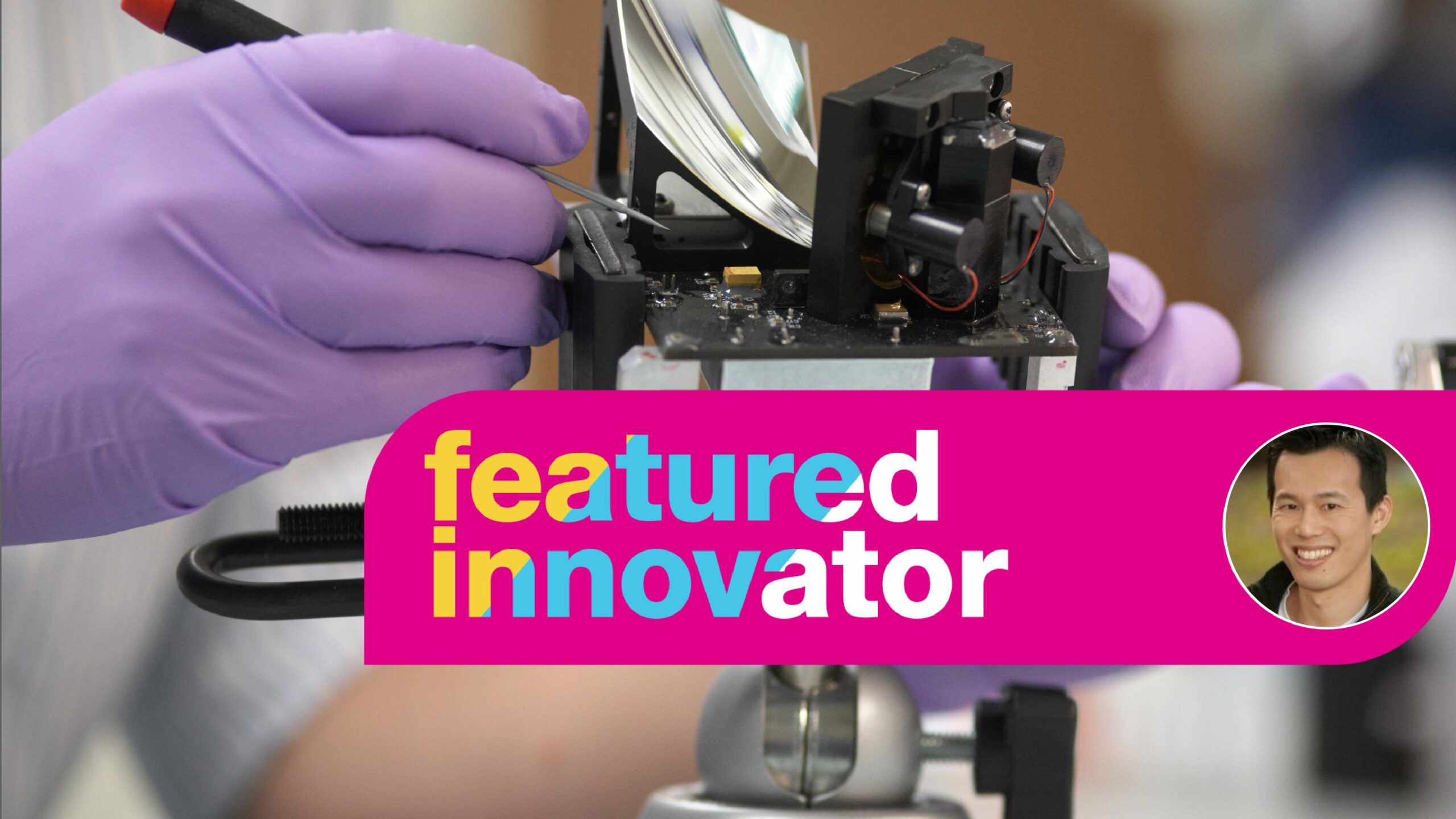
SRI senior research engineer is leading exciting advancements in space robotics
There’s no telling where great minds source their inspiration. Sometimes, it’s from unexpected places — like cartoons.
Just ask Samson Phan. The initial sparks that fueled his passion for robotics and space exploration occurred in childhood.
“Where does the interest come from? Probably from growing up watching way too many cartoons with robot technology in them, like Voltron,” Phan says with a good-natured laugh, referring to the animated series that featured space explorers piloting a giant super robot.
These cartoons helped set Phan on the path to what he is today: a pioneering scientist in the fields of astronautics and aeronautics. He is spearheading groundbreaking advancements from satellite technology to the use of robotics on space missions.
Phan has done that and more in the five years he has been with SRI International, where he currently works as a Senior Space Engineer in the Robotics Laboratory. He relishes his role as part of the institute.
“It’s a very compelling field to work in, with so much to explore and a lot of support for doing exciting new things,” Phan asserts.
Building a solid foundation
While cartoons helped light Phan’s fire for robotics and space, he needed a bit more formal training to fulfill his ambitions.
He started on that mission at UCLA, where he graduated with honors in aerospace engineering. From there, Phan earned a master’s degree in aeronautics/astronautics and a Ph.D in mechanical engineering from Stanford University.
Beyond his rigorous academic training, Phan gained experience as a research intern at GM and NASA. At GM, his accomplishments included successfully designing and executing testing protocols to address collision safety of industrial and experimental platforms. During his two years as a NASA intern, he helped to miniaturize a commercial quantitative-PCR device, a device that amplifies and detects DNA. The miniaturization was successful, reducing the device’s size by two orders of magnitude, allowing it to be used for microgravity applications and onboard flight testbeds.
SRI’s space robotics’ leader
This exciting work at GM and NASA helped prepare Phan for his position at SRI. Since joining in 2016, he has led exciting initiatives and projects rooted in his life-long interests in robotics and space.
Phan’s mind is as practical as it is theoretical and research-focused — having created a roadmap for the development of space robotics and a strategy for high level briefings. These efforts have led to business development and proposal generation resulting in millions of dollars of funding awards from organizations that include DARPA, NASA and the Department of Defense.
What Phan loves most, however, is scripting the future of the next space age with scientific advancements, including the development of CubeSats, the next-generation of miniature satellites. Another recent project that he participated in led to the creation of a state-of-the-art synthetic aperture radar (SAR) instrument — a compact radar system developed to generate high-resolution remote sensing imagery from small satellites and unmanned aerial vehicles (UAV).
Recently, there has been an increase in the number of new space objects, but there’s no integrated solution for tracking them. “Hundreds of CubeSats are circling the globe with little regulation, presenting a growing need for situational awareness in space,” Phan notes.
To address this, Phan and his SRI colleagues, in conjunction with DARPA, developed the CubeSat Identification Tag (CUBIT), which identifies and tracks small, low-Earth-orbit satellites. SRI’s CUBIT unambiguously identifies co-deployed CubeSats and provides an alternative monitoring method for orbital objects.
“The CUBIT technology operates like an aircraft transponder by responding to earth-based signaling systems,” Phan says. “CUBIT technology is independent of the satellite design, which can vary in form and reliability, and has a proven track record of on-orbit operations.”
Improving robotic performance in space
Most recently, Phan has worked on a project that truly combines his love of space and robotics.
Phan and his team have brought core SRI technologies to fruition, creating actuators and mechanisms that can allow for a human-like dexterity in a robotic arm using only a single motor. Space explorers can use these robotic arms for various applications on missions. What differentiates SRI’s innovation is the single motor needed to power the dexterious arm.
The future of space exploration will include numerous planetary rovers and orbiting platforms for researchers to perform experiments and demonstrations that include grasping, lifting and lowering lunar soil, rocks and packages,” explains Phan. “Right now, robotic technologies can help with that, but they are costly, requiring, for example, six motors to achieve the desired functionality. With SRI’s technology, we’re able to work with industry partners on robotic arms that use one motor, which offers a whole range of advantages, including a competitive cost.”
Another significant advantage is housing the single motor inside the robot. This allows for a much more controlled environment than outside the arm.
In addition, outfitting the robot with only one motor within its base empowers the arm to carry a larger, heavier payload. “What we’ve developed is a lighter-weight, more efficient, lower-cost alternative to what’s out there now,” says Phan. Furthermore, this solution can be mass-manufactured, meaning many robots can be equipped with it, thereby providing the hardware necessary to improve many space missions.
Phan describes this breakthrough as “a real game-changer.” It’s not the first he’s developed at SRI, and it very likely won’t be the last.
Phan says the biggest draw for being at SRI is the people he works with, emphasizing that all the highlights shown were because of a concerted team effort and the amazing people he works with at SRI.



